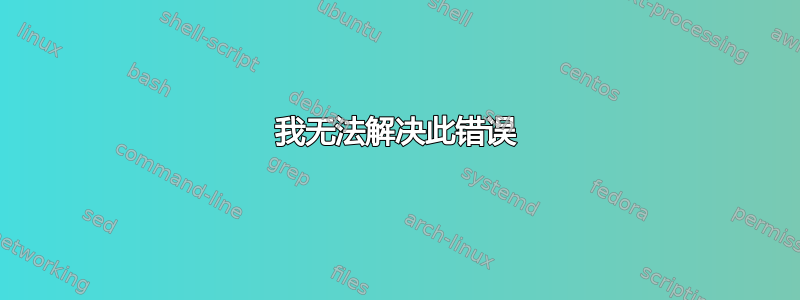
LaTeX Error: Something's wrong--perhaps a missing \item.
See the LaTeX manual or LaTeX Companion for explanation.
Type H <return> for immediate help.
...
\documentclass{beamer}
\pdfoutput=1
%----------------------------------------------------------------------
% Most users will not need to edit the preamble of the document.
% Instead, skip down to where it says "poster content begins here".
%----------------------------------------------------------------------
\mode<presentation>{\usetheme{poster}}
\usefonttheme{serif}
\setbeamertemplate{bibliography item}{}
\setbeamercolor{bibliography entry author}{fg=black}
\setbeamercolor{bibliography entry title}{fg=black}
\setbeamercolor{bibliography entry location}{fg=black}
\setbeamercolor{bibliography entry note}{fg=black}
\usepackage{amsmath,amssymb,array}
\usepackage{graphicx,tcolorbox}
\usepackage{mathptmx}
%\tcbuselibrary{listings,breakable,most,hooks,skins}
\graphicspath{{./graphics/}}
\usepackage[orientation=landscape,size=custom,width=121.92,height=91.44,scale=1.2]{beamerposter}
% Note: beamerposter expects measurements in cm
% 121.92cm = 48in, 91.44cm = 36in
% 48x36 inches is standard UIC poster printing size
% Header and footer
\newcommand{\footleft}{http://mcl.math.uic.edu/}
\newcommand{\footright}{}
%@@@@@@@@@@@@@@@@@@@@@@@@@@@@@@@@@@@@@@@@@@@@@@@@@@@@@@@@@@@@@@@@@@@@@@
% POSTER CONTENT BEGINS HERE
%@@@@@@@@@@@@@@@@@@@@@@@@@@@@@@@@@@@@@@@@@@@@@@@@@@@@@@@@@@@@@@@@@@@@@@
\title{Visualising Polytopes In 4 Dimensions: the work of Alicia Boole Stott}
\author{Neelima Borade \quad Ryan Gleason}
\institute{University of Illinois at Chicago}
% Main document
\begin{document}
\begin{frame}
\begin{columns}[t]
%-- Column 1 ---------------------------------------------------
\begin{column}{0.245\linewidth}
%-- Block 1-1
\begin{block}{Summary}
Our project involved a systematic investigation of Alicia Boole Stotts' method of constructing sections of regular and semi-regular polytopes, and to 3D print these models. For this purpose we studied Euclidean Geometry , and made symmetric considerations while making the transitions fom two to three and three to four dimensions. Just as there are 5 platonic solids in 3 dimensions namely- the tetrahedron, the cube, the octahedron, the dodecahedron,and the icosahedreon, there exist 6 regular polytopes in 4 dimensions: the hypertetrahedron or the 5 cell, the hypercube or the 8 cell, the hyper octahedron or the 16 cell, the 24 cell, the 120 cell and the 600cell. each of these is bounded by isomorphic 3D regular polyhedra which are called cells. Alicia's method involves taking sections of the 4D polytopes by a 3D plane, so that the figure obtained by the intersections is a 3D polytope.Out of these 6 types of regular polytopes , we 3d printed sections of the 5 cell, and the 8 cell.
\end{block}
%-- Block 1-3
\begin{block}{Biography of Alicia Boole Scott}
Alicia Boole Scott was the daughter of the famous logician George Boole. Since there were limited educational opportunities available for English women in the middle of the nineteenth century, Alicia Boole was largely self-taught. In particular, she developed her entire method of sections based on the first two books of Euclid's Elements. Alicia had a good educational background due to her mother,Mary Everest Boole, who had studied with her husband, George Boole.Apart from being taught by her mother, Alicial's interest in mathematics was also stimulated by the amateur mathematician Howard Hinton, who was a school teacher with a deep interest in four-dimensional geometry. Motivated by Howard Hinton, Boole Stott decided to study four-dimensional geometry between 1880 and 1890. She didn't have any other connections in the scientific community.In 1895 she began working with Professor Peiter Schoute of the University of Groningen, and he encouraged her to publish some of her own work. Alicia published six papers between 1900 and 1910, three of which were co-authored with Schoute. Alicia constructed precise sections of all the six three-dimensional regular polytopes , by using cardboard models. As a result of Alicia's significant work in mathematics, the University of Groningen awarded her a doctorate in 1914.
\end{block}
\end{column}%1
%-- Column 2 ---------------------------------------------------
\begin{column}{0.245\linewidth}
%-- Block 2-1
\begin{block}{UNFOLDING:}
In order to visualise the 4d polytopes we imagine unfolding them and then studying the unfolded structure which is in one dimension lower. For example instead of looking at a cube which is a 3 dimensional object we can unflod it to obtain 6 squares in 2 dimensions. By imagining how these squares will combine, that is which edges and vertices of the squares will coincide, we can imagine how a cube is formed using these two dimensional squares.ie edges (1,2), (3,10), (4,5),(6,9),(7,8),(11,14),(12,13), coincide in the cube.
Similarly in the next section we study how a section of the hypercube, consisting of sevetral cubes, can be studied to analyze how a hypercube is formed by combining all these cubes.
\begin{itemize}
\end{itemize}
\end{block}
%-- Block 2-2
\begin{block}{HYPERCUBE UNFOLDING}
Including math within the text is as simple as $1+1=2$. You can also
highlight more important equations like this:
$$
\int_0^1\sin(x)+\cos^2(x)+\alpha x\ dx
$$
\end{block}
%-- Block 2-3
\begin{block}{Two Pictures}
\vspace{0.5em}
\begin{center}
% Two copies of a placeholder picture.
\includegraphics[width=0.9\columnwidth]{science}\\[1em]
\includegraphics[width=0.9\columnwidth]{science}
\end{center}
\end{block}
\end{column}%2
%-- Column 3 ---------------------------------------------------
\begin{column}{0.245\linewidth}
%-- Block 3-3
\begin{block}{Three Pictures}
\vspace{0.5em}
\begin{center}
% THREE copies of a placeholder picture.
\includegraphics[width=0.9\columnwidth]{science}\\[1em]
\includegraphics[width=0.9\columnwidth]{science}\\[1em]
\includegraphics[width=0.9\columnwidth]{science}
\end{center}
\end{block}
\end{column}%3
%-- Column 4 ---------------------------------------------------
\begin{column}{0.245\linewidth}
%-- Block 4-1
\begin{block}{HYPERCUBE SECTIONS}
Answer the question posed by each block heading as efficiently as
possible. A block titled ``experiments'' should get right to the
point of explaining what experiments were conducted.
\end{block}
%-- Block 4-3
\begin{block}{Conclusions}
We find that there are infinitely many primes, and that most of them
are odd. Also,
\begin{itemize}
\item Primes less than $n$ are slightly more likely to be quadratic
non-residues mod $p$, when $p$ is a fixed prime and $n$ is large.
\item There are infinitely many consecutive prime pairs $p_n, p_{n_1}$
satisfying $p_{n+1} - p_n < 300$.
\end{itemize}
\end{block}
%-- Block 4-4
\begin{block}{References}
\begin{thebibliography}{99}
\bibitem{taylor-wiles} R. Taylor, A. Wiles. \emph{Ring theoretic
properties of certain Hecke algebras}. Ann. Math. \textbf{141}
(1995), 553--572.
\bibitem{wiles} A. Wiles. \emph{Modular elliptic curves and Fermat's
Last Theorem}. Ann. Math. \textbf{141} (1995), 443--551.
\end{thebibliography}
\end{block}
\end{column}%4
\end{columns}
\end{frame}
\end{document}
答案1
这是一个有点臭名昭著的错误,在 99% 的情况下,它不是由缺少项目引起的,但你属于 1% 的情况,错误意味着它所说的
\begin{itemize}
\end{itemize}
您有一个没有 的列表\item。只需删除这些行即可。


